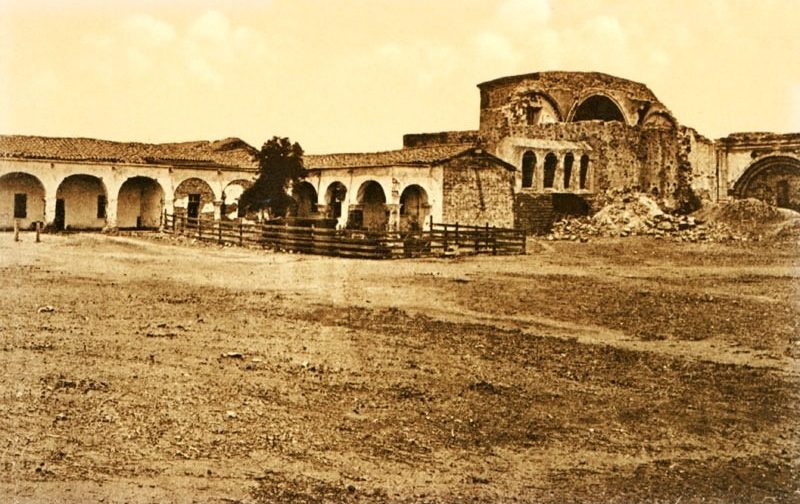Mission San Juan Capistrano has the peculiarity of having been founded twice. With its establishment, the Fathers intended to interrupt the long journey between Mission San Diego de Alcalá and Mission San Gabriel Arcángel. On October 30, 1775, Father Fermín Lasuén and a fellow Franciscan erected a wooden cross and hung two bells from a tree near the Indian village of Sajavit. But eight days after its foundation, rumors that the Indians had attacked Mission San Diego de Alcalá came to the Father’s ears.
Thus, having buried the mission bells to avoid being stolen, the Founding Fathers and the small party of Spanish soldiers who escorted them immediately headed to San Diego. Father Junípero Serra returned to the site a year later and re-founded the mission on All Saints Day, November 1, 1776. Fr. Serra named it for Saint John of Capistrano, an Italian theologian and inquisitor of the 14th century.
Because of inadequate water supplies, the mission was relocated three miles west near the Indian village of Acágcheme. San Juan Capistrano is one of the best-known missions. Because of its striking beauty, it is often referred to as “The Jewel of the Missions“.
The swallows (Las Golandrinas) are one of its peculiar features and a group of them return every year to the mission premises on “St. Joseph’s Day” on March 19 to build their mud nests for the annual brood.
The nearby local Indians, the Juaneño tribe, were friendly and industrious and helped the Spanish missionaries construct the mission buildings. The first adobe church was completed in 1777, just one year after funding the mission. In 1791, after hanging from a tree for 15 years, the Mission Fathers moved the bells to a newly built tower.
Works on “The Great Stone Church” were begun in 1796 and completed in 1806. The new church was built in the shape of a cross and had vaulted ceilings, seven domes, and four bells elevated in a 120-foot tall tower. It was the only mission church in Alta California whose chapel had stones instead of adobe bricks. After only six years, in 1812, the stone church crumbled to the ground in an earthquake, killing 40 Indian converts. The mission Fathers renounced rebuilding the remarkable stone church and returned to worship in the previous adobe chapel.
In 1779, wine grapes were planted at the mission, and in 1783 the missionaries produced the first wine ever made in Alta California. Mission San Juan Capistrano was secularized in 1834 and sold in 1845. In 1865, ownership of the Mission returned to the Catholic Church.
Today, the original adobe church, also known as “Father Serra’s Chapel” has been restored and functions as a parish church. It is the only remaining chapel in which Father Junípero Serra held mass. The ruins of the uncompleted “Great Stone Church” still stand and remain a renowned architectural wonder. Nearly half a million people visit the mission premises every year, including 80,000 schoolchildren.
Location of Mission San Juan Capistrano
26801 Old Mission Road, San Juan Capistrano, CA 92675, United States
